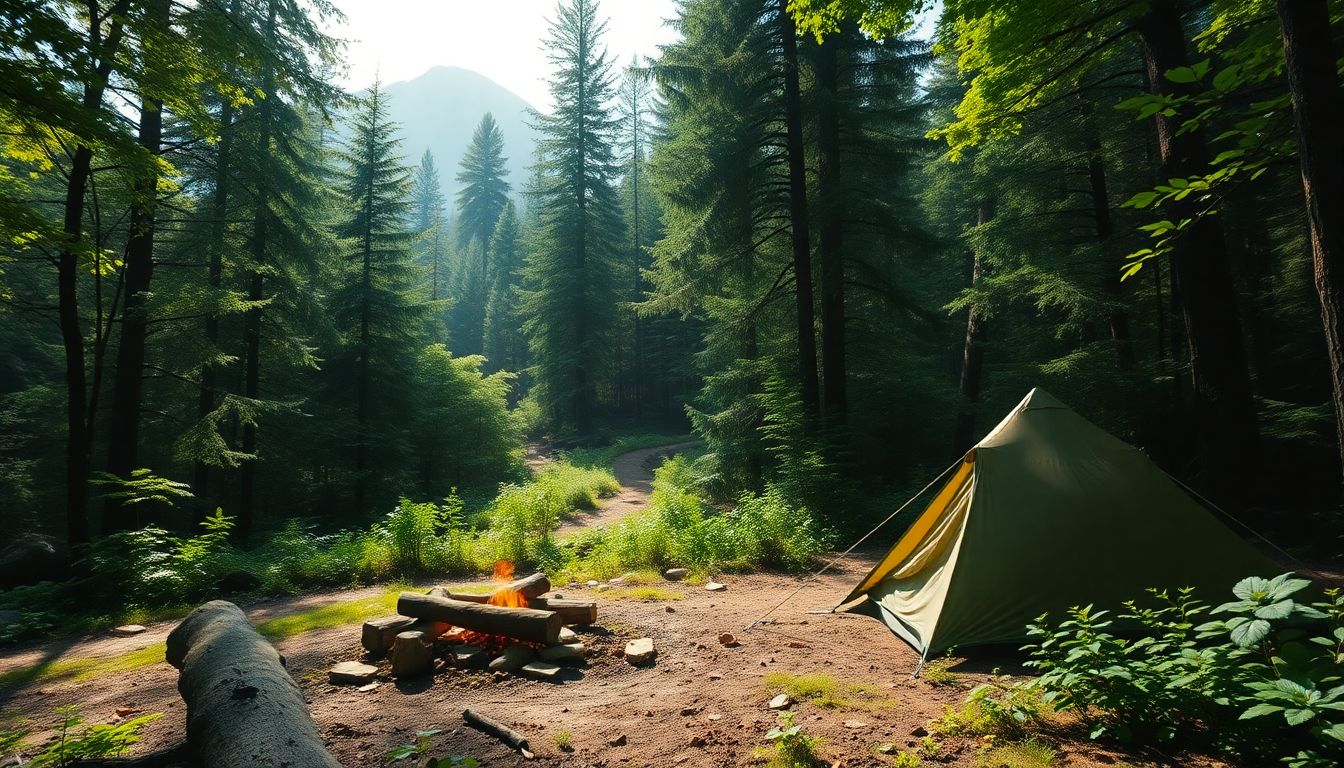Wake up to bird songs outside window-sized panels of trees, and enjoy the serenity between them, without the crowd of noisy campgrounds. This is the purest magic of camping within the national forest. Dispersed camping, as it’s called, will free you, save you money, and take you back to the wild. Within these pages, you will find the guidance to plan a trip that will be safe, fun, and responsible.
Camping in National Forests
The national forests differ from national parks. These are places that define areas preserved as special. Timber and recreation resources, managed by the Forest Service, cover huge lands all over the United States.
What is Dispersed Camping?
When you camp outside of designated campgrounds, it’s called dispersed camping. There are no picnic tables or restrooms. Leave No Trace is the golden rule in this case; thus, you must bring in everything and take it out again. You usually do not charge fees or require permits for this type of camping.
Advantages of Camping in National Forests
So why go national forest camping? Solitude and cheaper trips. You choose your very own place, not as assigned to you. It’s much more common to spot wildlife. This is what most people love. More and more people tend to go dispersed every year.
Planning Your National Forest Camping Trip
All trips should be planned, and so is this one. Research the destination. The right gear should be obtained. Know the laws. Everything about the trip will be awesome once they follow through.
Researching Your Destination
There is excellent information from the National Forest Service Website. Use their interactive maps to find spots that will work. Find out the elevation and terrain characteristics. Are there fire restrictions? Knowing all these is something one should have before heading out.
Essential Gear and Supplies
- Tent
- Sleeping bag
- Camping supplies
- Water filter
- First aid kit
- Map and compass
If bears live in the area, bring bear safety gear. Adjust your list for the season.
Learning the Rules and Permits
National forests have rules. Some limit how long you can stay; others restrict fires; some areas require permits. Each case is different, so check before you go.
Responsible Campsite Selection
Keeping the environment safe is important. Select your camping spots carefully. Practice the Leave No Trace philosophy. Be firewise.
Selecting a Campsite
Use pre-existing campsites where possible. Create new campsites only as a last resort. Keep away from water. Avoid fragile plants. Choose a site that will have minimal interference with nature.
Practicing Leave No Trace Principles
These are the seven principles that protect our forests:
- Plan ahead and prepare.
- Travel and camp on durable surfaces.
- Dispose of waste properly.
- Leave what you find.
- Minimize campfire impacts.
- Respect wildlife.
- Be considerate of other visitors.
Following these preserves the forests in pristine condition.
If you must have a fire while camping, do it safely. Remember: small fires are best. Never leave a fire unattended. Douse the embers completely with water. Certain forests do not allow fires at all. Use a camp stove instead. The campfires left unattended cause many wildfires every year.
Awareness of Safety and Wildlife
Know the dangers. Know the weather. Know the animals. Know how to navigate. Stay safe.
Weather Considerations
Always ensure you check the weather before leaving. Weather can change very fast in the mountains. It is also good to pack rainwear and clothing for warm or cold weather. Also, know what to do if you are struck by lightning.
Wildlife Encounters
Never feed wild animals. Properly store food in bear-resistant containers. Hang food in a tree. If you see a bear or mountain lion, remain calm. Make yourself appear larger. Back away slowly.
Avoiding Getting Lost and Staying Found
Always take along a map, a compass, or, if you can afford one, a GPS. Make sure you know how to use whatever equipment you take along. When absent on your route, stay on marked trails as much as possible. Inform someone about your destination. Getting lost can be helped by this.
Enjoying Your Experience in the National Forest
While on national forests, you can do so many recreational activities. Hiking, fishing, and photography are all very fun. Rest in nature’s stillness and beauty.
Hiking and Exploring
Whether on easy nature trails or hard-core backpacking trips, try to match your hike to your ability. Bring along water and snacks.
Fishing and Other Activities
Fishing is an awesome activity in many national forests. Get a fishing license. Know the limits of the catch. Other activities that you can engage in include kayaking, canoeing, or swimming. Make sure to use a PFD.
Stargazing and Nature Photography
Dark skies found in national forests make stargazing awesome. Bring your camera and capture the beauty of nature.
Conclusion
Camping in the national forests ensures freedom and adventure. Always remember to prepare carefully, stay safe, and take care of the environment. These excursions are worth it. Now start planning your trip!
